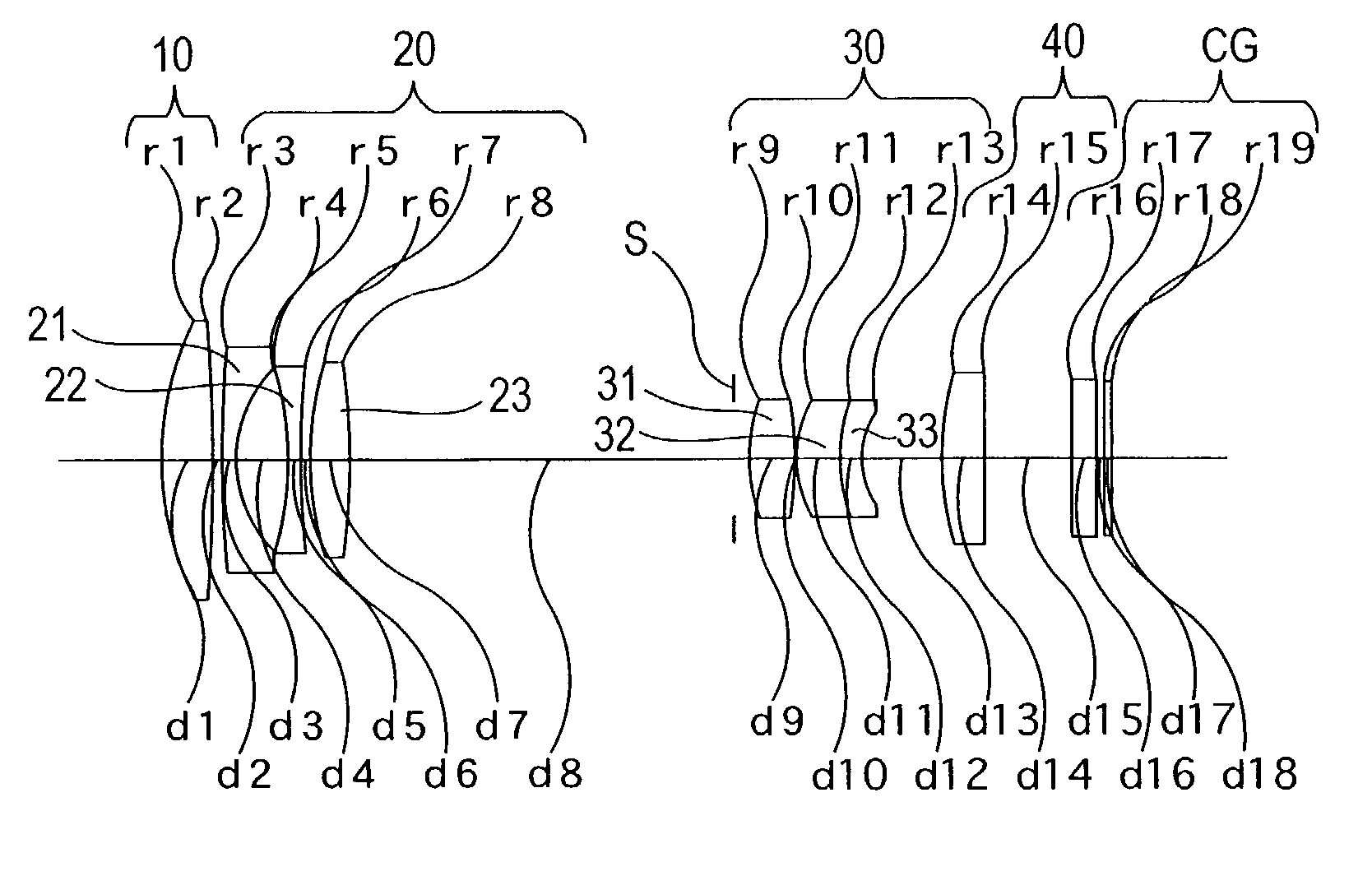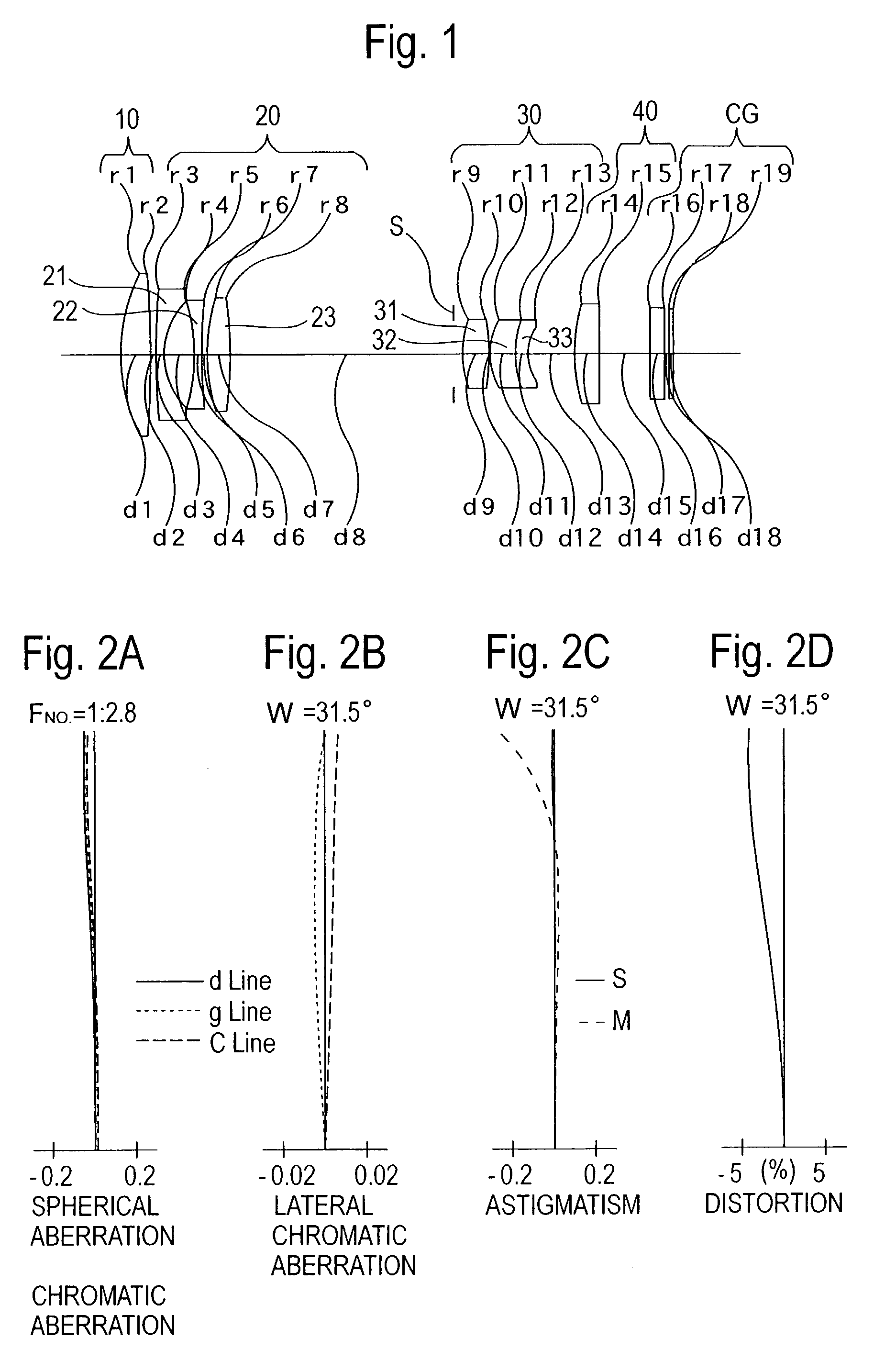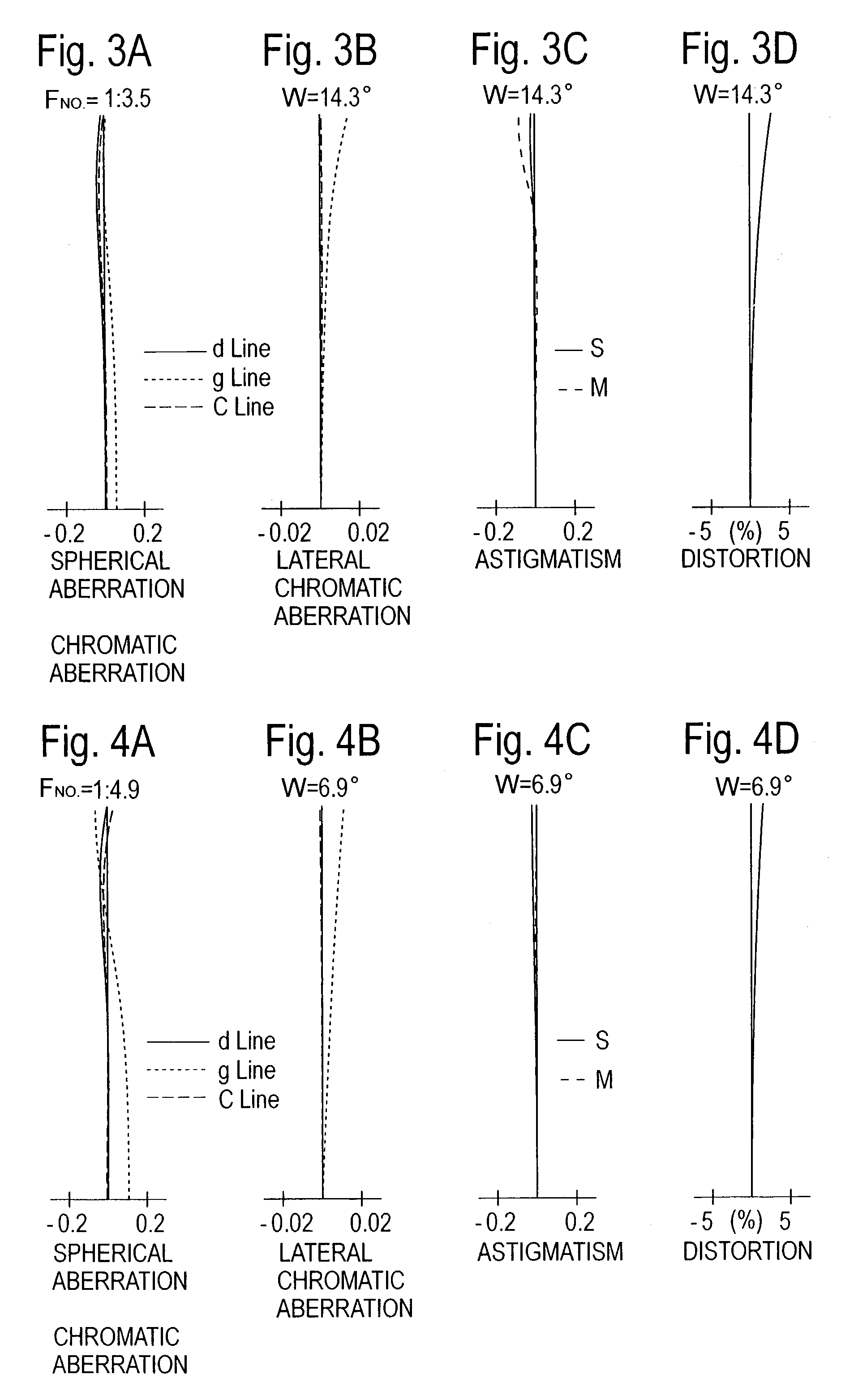Zoom lens system
- Summary
- Abstract
- Description
- Claims
- Application Information
AI Technical Summary
Benefits of technology
Problems solved by technology
Method used
Image
Examples
embodiment 2
[Embodiment 2]
[0075]FIG. 5 is the lens arrangement of the zoom lens system according to the second embodiment of the present invention. FIGS. 6A through 6D show aberrations occurred in the lens arrangement shown in FIG. 5 at the short focal length extremity. FIGS. 7A through 7D show aberrations occurred in the lens arrangement shown in FIG. 5 at an intermediate focal length. FIGS. 8A through 8D show aberrations occurred in the lens arrangement shown in FIG. 5 at the long focal length extremity. Table 2 shows the numerical data of the second embodiment.
[0076]The basic lens arrangement is the same as that of the first embodiment except that for the positive third lens group 30 includes a positive lens element 31 and a negative lens element 32, in this order from the object. The diaphragm S is provided 0.97 mm in front (on the object side) of the positive third lens group 30 (surface No. 9).
[0077]
TABLE 2FNO = 1:2.8–3.5–4.7f = 8.00–18.00–38.00W = 31.4–14.2–7.0fB = 0.00—0.00—0.00Surf. No...
embodiment 3
[Embodiment 3]
[0080]FIG. 9 is the lens arrangement of the zoom lens system according to the third embodiment of the present invention. FIGS. 10A through 10D show aberrations occurred in the lens arrangement shown in FIG. 9 at the short focal length extremity. FIGS. 11A through 11D show aberrations occurred in the lens arrangement shown in FIG. 9 at an intermediate focal length. FIGS. 12A through 2D show aberrations occurred in the lens arrangement shown in FIG. 9 at the long focal length extremity. Table 3 shows the numerical data of the third embodiment.
[0081]The basic lens arrangement is the same as that of the first embodiment except that (i) the positive first lens group 10 includes cemented lens elements having a negative lens element 11 and a positive lens element 12; and (ii) the positive third lens group 30 includes a positive lens element 31, cemented lens elements having a positive lens element 32 and a negative lens element 33, and a negative lens element 34, in this orde...
embodiment 4
[Embodiment 4]
[0085]FIG. 13 is the lens arrangement of the zoom lens system according to the fourth embodiment of the present invention. FIGS. 14A through 14D show aberrations occurred in the lens arrangement shown in FIG. 13 at the short focal length extremity. FIGS. 15A through 15D show aberrations occurred in the lens arrangement shown in FIG. 13 at an intermediate focal length. FIGS. 16A through 16D show aberrations occurred in the lens arrangement shown in FIG. 13 at the long focal length extremity. Table 4 shows the numerical data of the fourth embodiment.
[0086]The basic lens arrangement is the same as that of the first embodiment except that (i) the positive first lens group 10 includes cemented lens elements having a negative lens element 11 and a positive lens element 12; and (ii) the positive third lens group 30 includes a positive lens element 31, a positive lens element 32, and a negative lens element 33, in this order from the object (without including a cemented lens e...
PUM
 Login to View More
Login to View More Abstract
Description
Claims
Application Information
 Login to View More
Login to View More - Generate Ideas
- Intellectual Property
- Life Sciences
- Materials
- Tech Scout
- Unparalleled Data Quality
- Higher Quality Content
- 60% Fewer Hallucinations
Browse by: Latest US Patents, China's latest patents, Technical Efficacy Thesaurus, Application Domain, Technology Topic, Popular Technical Reports.
© 2025 PatSnap. All rights reserved.Legal|Privacy policy|Modern Slavery Act Transparency Statement|Sitemap|About US| Contact US: help@patsnap.com



